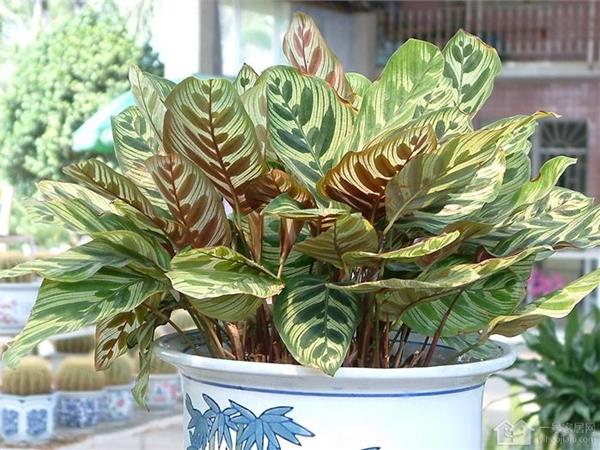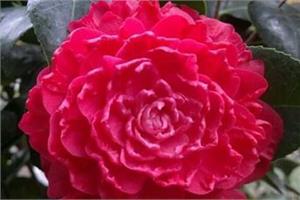Culture methods of peacock bamboo taro matters needing attention in peacock bamboo taro culture
The peacock bamboo taro leaf is a dark green spotted plant with brown-red spots of the same shape on the back. It can effectively remove ammonia pollution in the air. Let's take a look at the breeding methods of peacock taro and the points for attention of peacock taro culture.

I. Culture methods of peacock bamboo taro
1. Cultivation environment, peacock bamboo taro like high temperature and humid environment, strong negative resistance, light intensity of 30% to 40% is appropriate. It grows well under indoor scattered light and should be cultivated in loose, fertile and well-drained soil. In spring and autumn, it can be maintained in a bright indoor light, and in summer, it should be kept in a semi-shady place. Excessive light will make the leaves yellow and scorched, affecting its ornamental value. When the light intensity decreases in winter, the flowerpot can be moved to the south window for cultivation, and the growth environment should not be too shady at this time. If placed in dim light for a long time, the leaves of peacock taro will lose their unique luster.
two。 Growth temperature, moderate
The ① temperature and the optimum growth temperature of peacock taro are about 22 ℃. When the summer temperature is higher than 35 ℃, not only the plant growth is stagnant, but also the leaf color turns yellow and loses ornamental value. The growth of the plant slows down when the winter temperature is lower than 15 ℃, the leaves below 10 ℃ are easy to curl, and below 5 ℃ are vulnerable to freezing injury, which will lead to the death of the whole plant. Therefore, attention must be paid to cold protection and heat preservation in winter, and the room temperature should be kept above 13 ℃.
② humidity, peacock bamboo taro suitable air humidity is 70%-75%, when sending new leaves, the humidity requirements are higher, so the growing season should be fully watered to keep the soil moist, but not stagnant water. Spray water on the leaves for 2 or 3 times a day in summer, and sprinkle water on the surrounding ground to humidify and cool down to facilitate its growth. Watering should be controlled in winter, and the basin soil can be slightly wet. The indoor air in northern winter is dry, except that the foliage can be sprayed with water similar to room temperature around noon during the day, it is best to put on a plastic film cover to keep warm and moisturizing at night. In order to keep the leaves fresh and tidy and shining, gently scrub the leaves with clean water every half a month.
3. Selection of pots and fertilization
① selected pots and peacock taros are shallow root plants, and large mouth shallow pots should be selected for cultivation containers to facilitate root elongation and extension. The basin soil should be loose, fertile and well drained. It can be mixed with 6 parts of peat soil (or rotten leaf soil), 2 parts of garden soil and 2 parts of sandy soil. It can also be prepared with soilless matrix, such as perlite and vermiculite. Generally, the basin is changed at the turn of spring and summer combined with ramet propagation, and the basin is changed once every 2 years.
② fertilization and dilute liquid fertilizer should be applied every half a month in the peak growing season, and attention should be paid not to apply too much nitrogen fertilizer so as to avoid bad growth phenomena such as leaf speckle fading, leaf thickening, petiole softness and so on. The application ratio of nitrogen, phosphorus and potassium should be 1 ∶ 1 ∶ 1. Using soilless cultivation, the inorganic nutrient solution of all elements can be irrigated once or twice a month during the growth period.
4. Breed. Peacock bamboo taro is mostly propagated by individual plants, which is combined with pot change and soil change from April to May in spring. The ramet is too early, the temperature is too low, the wound heals slowly, it is easy to cause rot and reduce the survival rate. When ramet, deduct the mother plant from the basin, remove the persistent soil, use a sharp knife to cut into 1 plant every 3 to 4 buds, apply charcoal powder to prevent corrosion, immediately put on the basin after cutting, pour water thoroughly, slow down the seedlings in the semi-shaded place, and transfer to normal management after 5 days. When dividing plants, it is better to plant 3-5 plants in one pot. If only one plant is planted in each pot, it is necessary to retain more than 5 leaves and bring more roots, otherwise it will affect the survival and growth and development of the plant.
II. Matters needing attention in the culture of peacock bamboo taro
Peacock bamboo taro likes high temperature and humid air, and grows fastest when it is more than 20 ℃. In the low temperature season from October to April of the following year, the north should move into the greenhouse to overwinter, and the winter overwintering temperature should not be lower than 15 ℃, otherwise the leaves are dark, the leaves curl and the leaf tips are yellow. if the freezing is slight, the environmental conditions can be changed in time, and new leaves can still be sent out in the coming spring. If the leaves are severely frozen, they die one after another, or even the whole plant dies.
Plant peacock taro if the indoor temperature difference between day and night can be covered with plastic film or insulated and moisturized with glass box, and wash the leaves with warm water once a month to maintain the color of the leaves. Every spring, when the temperature rises steadily to 20 ℃, the pot can be changed once. When changing the pot, new culture soil should be added, and the residual roots and leaves should be cut off and replanted to facilitate growth.
The above is the introduction of this article, I believe you have a simple understanding after reading it, if necessary, you can continue to pay attention to the No. 1 home network for more information.
Related
- Wuhan Hospital Iron Tree Blooming Result Was Instantly Frightened by the Gardener Master
- Which variety of camellia is the most fragrant and best? Which one do you like best?
- What is the small blue coat, the breeding methods and matters needing attention of the succulent plant
- Dormancy time and maintenance management of succulent plants during dormancy
- Minas succulent how to raise, Minas succulent plant pictures
- What are the varieties of winter succulent plants
- How to raise succulent plants in twelve rolls? let's take a look at some experience of breeding twelve rolls.
- Attention should be paid to water control for succulent plants during dormant period (winter and summer)
- Watering experience of twelve rolls of succulent plants
- Techniques for fertilizing succulent plants. An article will let you know how to fertilize succulent plants.


